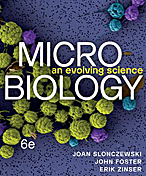Trichomoniasis
Introduction
Briefly introduce your topic
Description of Trichomoniasis
Trichomoniasis is the most common, curable sexually transmitted infection. According to the World Health Organization’s estimates, there are 7.4 million trichomoniasis cases annually in the U.S., and over 180 million cases worldwide.1 The CDC has reported an overall 3.1% prevalence of Trichonomas vaginalis in women aged 14-49, among women visiting a college clinic the prevalence is 4.8%, 10-18.5% among women living in urban areas, and 25% in inner city STI clinics.1 Among males, the prevalence is between 11 and 17%, but the prevalence if their partner is an infected women is 73%, and among adolescents (age 15-24) the prevalence is between 8.9% and 18.5%.1 In female prison inmates the prevalence is 31.2%-46.9%.2 Trichomoniasis is spread during genital-genital contact, and can also be spread vertically from mother to baby during childbirth 5% of the time.1 It is not spread by toilet seats, wet towels, or hot tubs. Risk factors include multiple sexual partners, non-condom use, marijuana use, past or current infection with other STI(s), bacterial vaginosis, and high vaginal pH (above 4.5).1 Also trading sex for money or drugs is a risk factor.2 Trichomoniasis affects the urogenital area in both women and men, yet there are different symptoms and complications for each sex. In women, trichomoniasis can cause yellow-green vaginal discharge, vulvovaginal itching and irritation, fishy odor, and pain during urination or sexual intercourse. Trichomoniasis often does not produce symptoms in men, but if present they include discharge from the urethra and burning urination or ejaculation. Abdominal pain may also be present.2 To diagnose trichomoniasis in both men and women, a health care provider will perform both a physical examination and a laboratory test. However, the most common clinically used lab test is 60-70% effective according to the CDC.1 Further tests can be conducted to give a more accurate diagnosis, like a polymerase chain reaction, but PCR is mostly used for research purposes not clinical ones. An oral prescribed medication called Metronidazole will usually cure the infection; however, in some case trichonomoniasis may be resistant to it, in which case Tinidazole should be used.3 It is recommended that all partners who may be infected get tested so that they can be treated if necessary. If left untreated, some complications for both men and women include herpes simplex 2 infection, HIV infection, and infertility. Trichomoniasis often co-occurs with other STIs, particularly Neisseria Gonorrhoeae, and may also increase the rate of infection of Human Papilloma Virus.2 For women, trichomoniasis can cause cervical dysplasia, pelvic inflammatory disease, and preterm birth. For men, consequences include nongonococcal urethritis and chronic prostatitis. Additionally trichonomonas vaginalis can cause epididymitis and decreased sperm motility in males.2 1. Trichomoniasis.org 2. http://emedicine.medscape.com/article/787722-overview 3. http://www.sciencedirect.com/science?_ob=ArticleURL&_udi=B6W9P-4BHSWFC-1W&_user=4429&_rdoc=1&_fmt=&_orig=search&_sort=d&_docanchor=&view=c&_acct=C000059602&_version=1&_urlVersion=0&_userid=4429&md5=011ce44b7450a4a4618d3b0be3479dda
Description of the microbe
Include a link if there is an existing microbewiki page. Ex. Salmonella typhi
Transmission of disease
How is it transmitted? Is there a vector (animal/insect)?
Prevention
Why is this disease a problem in [name of country]
Do lifestyle/environment/economics/political issues play a role?
What is being done to address this problem
About 5% of Trichomoniasis infections are drug resistant, and due to the lack of alternative treatments, patients are often administered higher and possibly toxic dosages of the drugs. Although the mechanism for antibiotic resistance is unknown, research has shown that the Trichomonas Vaginalis parasite carries enzymes that when expressed in Escherichia coli may activate or inactivate metronidazole. These enzymes have not been shown to confer resistance in T. Vaginalis, yet predict possible mechanisms and have sparked further research in what role these enzymes may play in metronidazole resistance. Studies suggest mechanisms for metronidazole sensitivity relate to levels of ferrotoxins, NAD(P)H, or oxygen. Experimental data with mice indicates that infection elicits an immunological response of parasite-specific antibodies in male serum and the female reproductive tract, and evidence has pointed to signs of acquired immunity. Research is currently being conducted to discover whether immune responses to the infection are undergone for protection, and how and to what extent the body acquires immunity to the infection. Upon clinical patient screening in women, if Trich symptoms appear, various diagnostic tools may be provided for further inquiry. These include wet mount microscopy, Papanicolaoustained gynecologic smears (pap smear), immunofluorescence with monoclonal antibodies, and specimen culture; the most effective seems to be the immunofluorescence. Mission Pharmacal, which has realized the implications of the disease’s impact and yet lack of its recognition, has since April 2007 urged for greater awareness and testing of the disease during national sexually transmitted disease (STD) awareness month. The Texas Animal Health Commission (TAHC) has adopted a program effective April 1, 2009 that requires cattle entering the state to be certified as virgin or be tested negative for Trichomoniasis; this is due to the various harmful complications of infected cattle on breeding and therefore crop harvesting.
What else could be done to address this problem
Are there solutions that could be successful but haven't been implemented due to political or economic reasons? Are there successful efforts in other countries? Are there reasons why these efforts may or may not be successful in the country you've focused on? etc. etc.
References
Edited by [insert your names here!], students of Rachel Larsen
This template is just a general guideline of how to design your site. You are not restricted to this format, so feel free to make changes to the headings and subheadings and to add or remove sections as appropriate.
